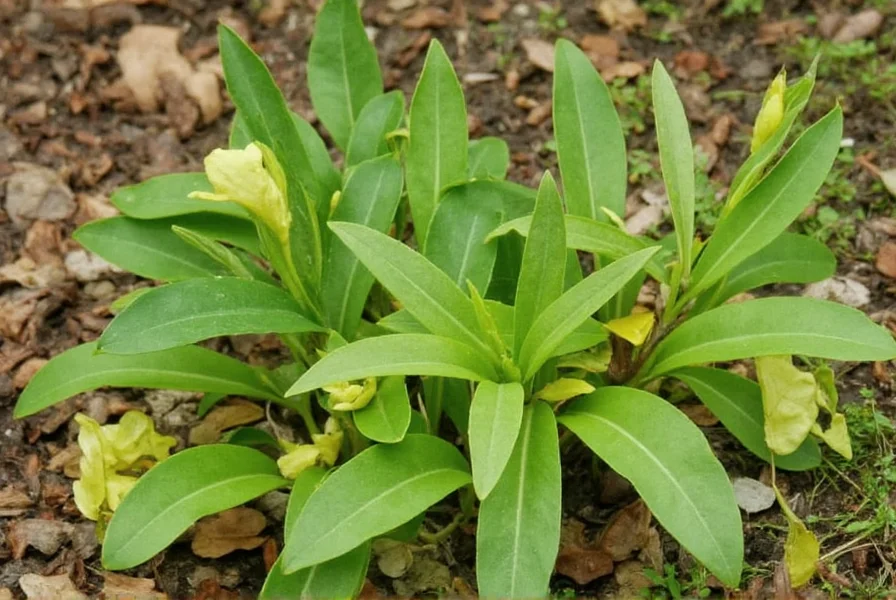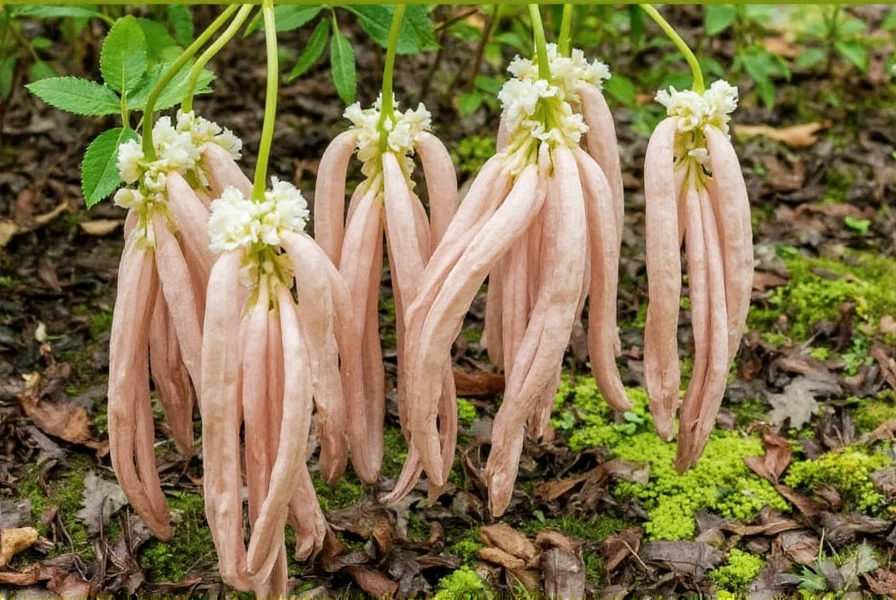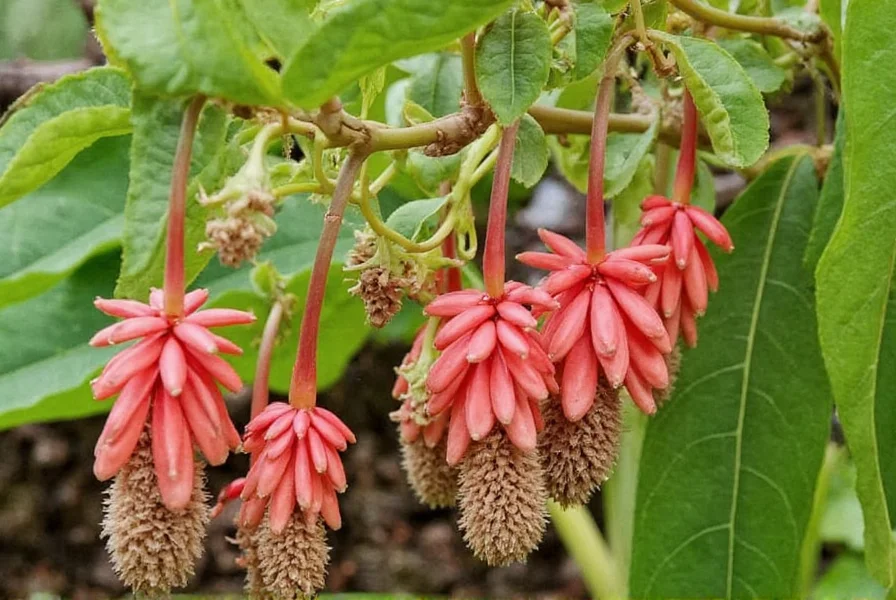
Understanding Wild Ginger: Not Your Kitchen Spice
Many gardeners confuse wild ginger (Asarum canadense) with the culinary ginger root used in cooking. While both are rhizomatous plants, they belong to completely different botanical families. Wild ginger is a native North American woodland plant prized for its attractive foliage and ability to form dense ground cover in shady areas. The plant earned its name because early settlers noticed a similar spicy aroma when crushing its leaves and rhizomes, though it's not recommended for culinary use due to potential toxicity concerns.
Ideal Growing Conditions for Wild Ginger
Successful wild ginger cultivation begins with understanding its natural habitat. In the wild, this plant thrives in deciduous forests with dappled sunlight and rich, moist soil. When selecting a location in your garden, prioritize areas with:
- Partial to full shade (less than 3 hours of direct sunlight daily)
- Soil pH between 5.5 and 6.5
- High organic matter content (3-5%)
- Consistent moisture without waterlogging
- Protection from strong winds
Wild ginger performs best in USDA hardiness zones 3-8, where it can survive winter temperatures as low as -40°F. The plant naturally goes dormant in winter, with foliage dying back completely in colder climates.
| Growing Factor | Optimal Conditions | Tolerance Range |
|---|---|---|
| Light Requirements | Partial to full shade | Can tolerate morning sun in cooler climates |
| Soil pH | 5.5-6.5 | 5.0-7.0 with amendments |
| Moisture Needs | Consistently moist | Short dry periods tolerated once established |
| Soil Type | Loamy, rich in organic matter | Clay or sandy with proper amendments |
Planting Wild Ginger: Step-by-Step Guide
For those interested in how to grow wild ginger successfully, timing and technique matter. The best periods for planting wild ginger rhizomes are early spring (as soon as the soil can be worked) or early fall (6-8 weeks before first frost). Follow these steps for optimal establishment:
- Prepare the planting area by removing weeds and incorporating 2-3 inches of compost or leaf mold
- Loosen soil to a depth of 8-10 inches while maintaining the natural forest floor structure
- Plant rhizomes horizontally 1-2 inches deep, with growth buds facing upward
- Space plants 6-12 inches apart for quicker coverage
- Water thoroughly after planting and maintain consistent moisture
- Apply 1-2 inches of leaf mulch to retain moisture and mimic natural conditions
When establishing wild ginger in your woodland garden, remember that patience is key. Unlike aggressive ground covers, wild ginger spreads slowly, typically expanding 2-4 inches per year. This measured growth makes it an excellent choice for controlled naturalization without becoming invasive.
Wild Ginger Propagation Techniques
Learning proper wild ginger propagation methods ensures successful expansion of your planting. While wild ginger can produce seeds, propagation through division is far more reliable and faster for gardeners. The best practices for each method include:
Rhizome Division (Recommended Method)
Divide established plants every 3-5 years in early spring:
- Dig up mature clumps carefully to avoid damaging rhizomes
- Separate rhizomes into sections with at least one growth bud each
- Replant sections immediately at proper depth
- Water thoroughly and maintain moisture during establishment
Seed Propagation (Advanced Method)
Wild ginger produces small seed pods that require specific conditions:
- Collect seeds when pods turn brown but before they split open
- Sow immediately in moist medium as seeds lose viability quickly
- Expect germination in 60-90 days with proper stratification
- Be patient—seed-grown plants may take 2-3 years to reach maturity
Care and Maintenance for Healthy Wild Ginger
Once established, wild ginger requires minimal care, making it an excellent choice for low-maintenance woodland gardens. Proper care ensures vigorous growth and natural spread:
Watering Requirements
During the first growing season, water wild ginger regularly to maintain consistent soil moisture. Established plants tolerate occasional dry periods but perform best with 1 inch of water weekly during dry spells. Avoid overhead watering to prevent fungal issues.
Mulching Practices
Apply a 1-2 inch layer of leaf mulch each fall to protect roots and maintain moisture. This mimics the natural forest floor and provides essential organic matter as it decomposes. Avoid heavy wood chip mulches that can alter soil pH.
Fertilizing Guidelines
Wild ginger typically requires no additional fertilizer when planted in organically rich soil. If growth seems sluggish, apply a light application of balanced organic fertilizer in early spring. Over-fertilization can damage this delicate woodland plant.
Pest and Disease Management
Wild ginger is remarkably pest-resistant due to its natural compounds. Occasional issues may include:
- Slugs: Hand-pick or use organic slug bait
- Root rot: Improve drainage if soil remains waterlogged
- Leaf spot: Remove affected leaves and improve air circulation
Common Challenges in Wild Ginger Cultivation
Even with proper care, gardeners may encounter challenges when growing wild ginger. Understanding these issues helps maintain healthy plantings:
Slow Establishment Period
Unlike aggressive ground covers, wild ginger establishes slowly. Don't mistake this natural growth pattern for failure. During the first year, focus on root development rather than visible growth above ground.
Competition with Tree Roots
When planting under trees, competition for moisture and nutrients can hinder growth. Create planting pockets with amended soil and provide supplemental water during dry periods to overcome this challenge.
Winter Dieback Concerns
In colder zones, wild ginger dies back completely in winter. This natural dormancy is normal—don't mistake it for plant death. Mark planting areas to avoid disturbing dormant rhizomes in spring.
Ethical Considerations for Wild Ginger Enthusiasts
As interest in native plants grows, ethical considerations become increasingly important. Wild ginger populations face pressure from habitat loss and irresponsible harvesting. When learning about wild ginger cultivation, remember:
- Never harvest wild ginger from natural areas—purchase from reputable native plant nurseries
- Support conservation efforts for native woodland ecosystems
- Choose cultivated plants over wild-collected specimens
- Share plants with fellow gardeners to reduce demand on wild populations
By cultivating wild ginger responsibly in your garden, you contribute to the preservation of this beautiful native species while creating a sustainable woodland garden feature.












 浙公网安备
33010002000092号
浙公网安备
33010002000092号 浙B2-20120091-4
浙B2-20120091-4